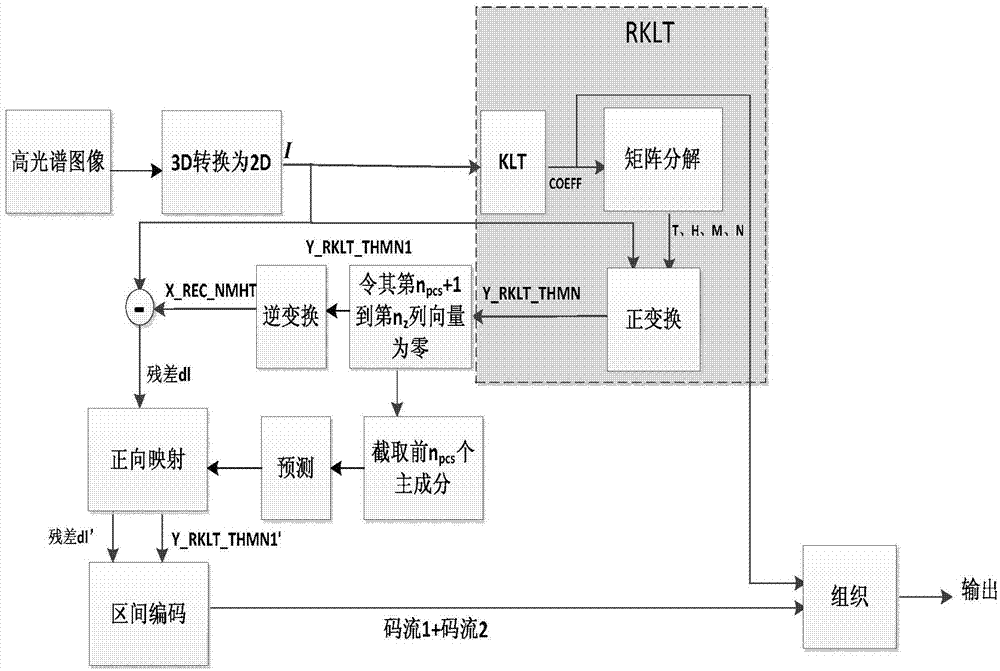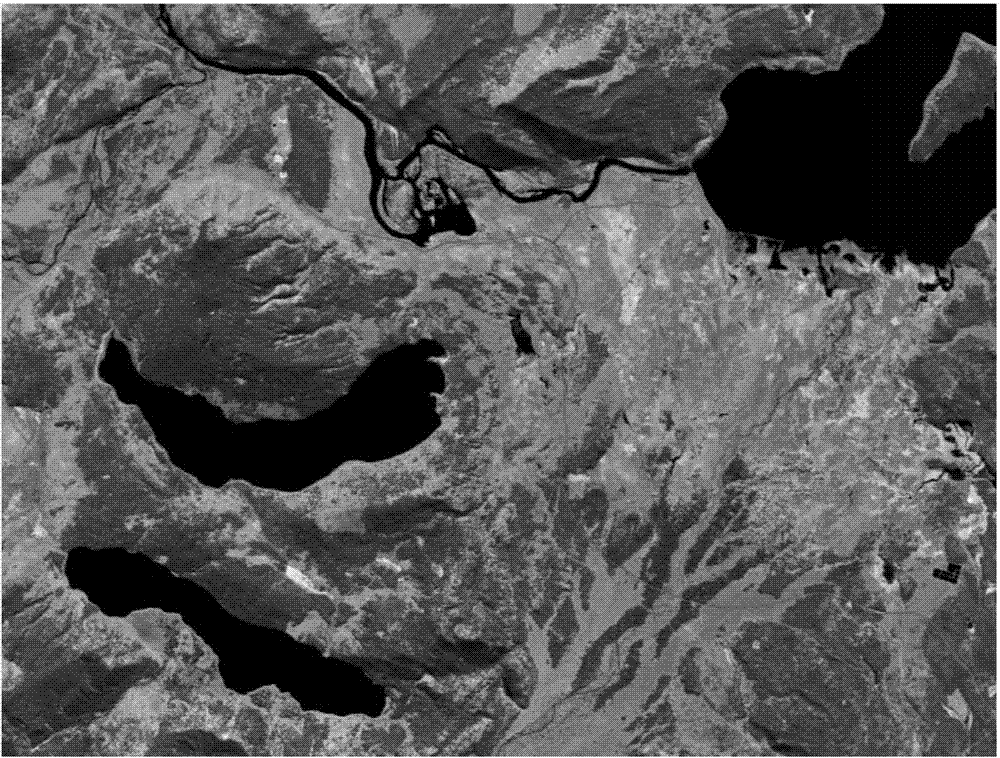Hyperspectral image lossless compression method based on RKLT and principal component selection
A hyperspectral image, lossless compression technology, applied in the field of remote sensing hyperspectral image processing, can solve the problems of unfavorable floating-point coefficients and processing, and achieve the effect of favorable processing and small storage space
- Summary
- Abstract
- Description
- Claims
- Application Information
AI Technical Summary
Problems solved by technology
Method used
Image
Examples
Embodiment approach
[0021] combine figure 1 , Figure 5 The embodiment of the present invention is described, specifically as follows:
specific Embodiment approach 1
[0022] Specific embodiment one: a kind of hyperspectral image lossless compression method based on RKLT and principal component selection described in this embodiment comprises the following steps:
[0023] Step 1. Set the number of rows, columns, and bands to n x , n y , n z Convert the 3D hyperspectral image into row number n x ×n y , the number of columns is n z The 2D matrix I;
[0024] Step 2. The matrix I obtained in step 1 is generated through RKLT to generate four sizes all of n z ×n z The matrix T, H, M, N and a row number n x ×n y , the number of columns is n z The matrix Y_RKLT_THMN of transformation coefficients, and the elements of Y_RKLT_THMN are all integers, where T, H, M, N are generated by KLT in RKLT and the number of rows and columns is n z The matrix COEFF composed of eigenvectors is obtained through matrix decomposition;
[0025] Step 3, make Y_RKLT_THMN the nth pcs +1 column vector to nth z The column vectors are zero, and the RKLT inverse t...
specific Embodiment approach 2
[0033] Specific embodiment 2: The difference between this embodiment and specific embodiment 1 is that the image conversion method described in step 1 is: the hyperspectral image is 3D, and in order to perform RKLT transformation, the data needs to be transformed into a 2D form, that is, through such as Figure 5 The zig-zag scanning method is realized. As shown in the figure, the number of rows, columns, and bands are n x , n y , n z The 3D hyperspectral image forms a nx ×n y row n z Columns of 2D data. Other steps are the same as in the first embodiment.
PUM
 Login to View More
Login to View More Abstract
Description
Claims
Application Information
 Login to View More
Login to View More - R&D
- Intellectual Property
- Life Sciences
- Materials
- Tech Scout
- Unparalleled Data Quality
- Higher Quality Content
- 60% Fewer Hallucinations
Browse by: Latest US Patents, China's latest patents, Technical Efficacy Thesaurus, Application Domain, Technology Topic, Popular Technical Reports.
© 2025 PatSnap. All rights reserved.Legal|Privacy policy|Modern Slavery Act Transparency Statement|Sitemap|About US| Contact US: help@patsnap.com



